Many gardeners adhere to this opinion that in all the variety of various decorative garden plants, separate cultures can be distinguished, which are easily able to decorate any plot on their own and eclipse all other plants. It is to such decorative cultures that Clematis refers - a bright blooming liana, which has long been enjoyed just a great popular among experienced flowerflowers and just lovers of beautiful plants.
A jacma group is considered the most common type of Clematis, which is distinguished by relative resistance to weather vision and large colors. Clematis Ernest Marcham is a very effective representative of the Jacma Group, which can increasingly be found in the household plots in Russia. This decorative liana will please abundant blossom, during which all shoots are covered with large red-crimson flowers.
In this article, consider the features and botanical description of Clematis Ernest Marcham, as well as the options for its use in landscape design. We note important rules and nuances of landing and care for Clematis Variety of Ernest Marcham.
Clematis Ernest Marcham: Features and Detailed Botanical Description
All varieties of Clematis are unique in their own way and beautiful, as evidenced by their vast popularity among gardeners in various countries of the world, including in Russia. However, Clematis group of Jacma, which have a huge amount of advantages, was particularly widely distributed. First of all, these plants can be pleased with lush and bright flowering, which is accompanied by the dissolved of large and very beautiful colors. In addition, Jacman Clematis are well tolerated by the climatic conditions of Russia.
This type of decorative lian includes today simply a huge number of large-flowered varieties, among the bright diversity of which each gardener will be able to pick up the perfect option. The first grades of Clematis of the Jacman group were bred in England in 1858. The decorative variety of Clematis Raspberry Ernest Marchem was represented by the Gardening World in 1936 by the creator of this plant by the breeder E. Markham.
Clematis Ernest Marchem is a popular low-spirited representative of the family, harmoniously fit into a variety of garden compositions. In addition, this hybrid plant was derived with particularly severe areas of growth, so the seedlings of such decorative lianas became popular due to their unpretentiousness.
Description Clematis Ernest Markham:
- Clematis Large-flowered Ernest Marchem is a very popular variety of decorative Liana, relating to the genus Jacma, who, in turn, is a large number of perennial, well-curly Lian, which are in a large family of iltike.
- Clematis of this variety can be grown in a shrub form and in the form of a fucked Liana, which most often can be seen in the garden sites.
- This plant has a very powerful root system, like other representatives of culture. It is a long and dense rod root with a large number of branches. Separate roots can reach 1 meter or more, so it is so important to choose the right place to plant seedlings.
- Thanks to a good root system, Clematis of this variety and other varieties is perfectly fixed on any soils, even on stony soils.
- In the height of Clematis Ernest Marchem can as much as possible to grow up to 3-3.5 meters. However, most often on the household plots can be found plants with a height of 1.5-2 meters. Therefore, gardeners sometimes use Clematis of this variety for container growing.
- At the same time, the decorative shrub liana is formed by subtle and elastic shoots, which in shape resemble a tetrahedron. The thickness of the shoots is small, only 2-2.5 mm. The screens of this variety have a light or dark brownish gray shade and a small ribbon. To the touch surface of the shoots pubescent.
- The shoots of Liana flexible, weave well, can rely on the natural and artificial support. They differ in moderate growth and good ability to form new shoots.
- The leaves from Clematis Ernest Marcham Non-parpty, consist of 3-5 small leaves, the length of which is about 10 cm, and the width is 5 cm. The surface of the foliage is glossy, smooth, dark green. Form leaves elongated, egg-shaped, pointed, with a slightly wavy edge.
- Leaves of this decorative liana are attached to long and flexible stiffs, with the help of which shoots climb along the most different supports: walls, fences, trees.
- The main beauty and decorative of Clematis Ernest Marchem lies in abundant and fairly spectacular flowering.
- This Liana variety is distinguished by late bloom, which starts at about late June or in early July and lasts until October.
- At the specified period, all the plant is covered with beautiful large colors, which, with full disclosure in diameter, can reach 12-15 cm.
- Clematis Flower Ernest Marchem consists of 5-6 petals of an extended and pointed form with a slightly wavy edge. Liana flowers are painted in a red-raspberry shade with a small glitter, on the touch of a petal velvety.
- In the center of the colors there are cream-brown stamens.
- Clematis Clematis Group of Ernest Markham is the third, as the flowers are blown on the shoots of the current year and on autumn all shoots are cut up to 2-3 kidneys.
- This variety of decorative lianas perfectly transfers harsh climatic conditions, the plant refers to 4 climatic zone, so it can withstand a decrease in temperature to minus 35 degrees.
Using Clematis Ernest Marcham in the garden landscape and plot
As noted above, all Clematis always occupy one of the central places in any landscape design. This is associated with a magnificent appearance of the plant, as well as with bright and long blossoms. It was not an exception and variety of Clematis Ernest Marchem, who had long been loved by flowers and landscape designers with their beautiful and large flowers. When creating an original and modern household plot and any landscape composition, you can easily apply Clematis of this variety. To do this, you can use the several most common ways.
- First of all, Clematis The large-flowered Ernest Marchem is the perfect option for vertical landscaping. This decorative curving Liana Gardeners prefer to land along the walls and fences, as well as at the entrance to the house, thereby creating a bright element of the composition.
- In addition, the liana of this variety will look very impressive if you put it near the gazebo or terrace. Escapes will quickly lead the whole building, creating a very cozy and beautiful place to relax.
- You can create different arches and pergolas that harmoniously fit into modern landscape design.
- Clematis Ernest Markham is suitable for forming borders, various pyramids and columns.
- This variety of Liana has bright and very large colors, which is undoubtedly useful as the main rear background for any flower group.
- Such a curly Lian can easily close the non-sustainable places on your site, hide untidy fence or wall.
- Because of its compact sizes, Clematis Ernest Markham is often planted into large garden containers, which are later settled in the area in any order. Such pots with Lianami can be decorated with a balcony with loggia.
Undoubtedly, Clematis Ernest Marchem has long been firmly made one of the leading places among the other curly Lian to decorate the site. Such a beautiful and at the same time unpretentious plant can leave indifferent.
Photo Clematis Ernest Marcham
The reproduction of Clematis Ernest Marcham: the most common ways
It is absolutely easy to grow in its site a beautiful and blooming decorative liano of this popular variety. Moreover, any gardener with basic knowledge of planting and leaving for plants with ease can continue to propagate this clematis independently. To do this, you only need to know the basic methods of breeding that are suitable for Clematis Ernest Marcham. In this case, it is worth paying attention to the seed reproduction, harassment and reproduction by gag. Consider the basic rules and features of each option.
The reproduction of Clematis Ernest Marcham
- This method of gardeners use most often, as it is characterized by simplicity and efficiency.
- In addition, making a chain very simply for the reason that Clematis is a curly Lian with flexible and long shoots.
- It is recommended to carry out such reproduction.
- To do this, you need to choose strong and healthy side shoots on an adult liana.
- Next, under the bush, dig out the shallow grooves, the length of which depends on the length of the escape and the desired amount of grain.
- After that, the shoots are flexing into the grooves and fix them with special brackets or wire, so that they do not return to the place. Next, sprinkle the soil branches, leaving only the top.
- Throughout the season, the tank should be abundantly watering and loosen the soil. Gradually, sprouts will begin to appear from escape. Usually sprouts appear as much as the kidney shoot.
- In the fall or next spring, we can separate the maternal plant. For this, the entire escape is neatly separated by a shovel, after which they are divided into the available number of seedlings.
The reproduction of Clematis Ernest Marcham Strenniki
- The most popular and large-scale method of reproducing Clematis Ernest Marcham is shilling, since it can be immediately obtained a large number of seedlings. In addition, the reproduction process itself does not differ in some complicated and unfamiliar actions.
- First of all, it is necessary to prepare landing material. The most optimal time for the workpiece of cuttings - before breaking the buds.
- Cuttings need to cut into a sharp knife or a secateur. It is advisable to do it from the middle of the escape, and the escape should be strong and healthy. In the case of Clematis Ernest Markham, it is possible to use green cuttings.
- The length of one cutter should be about 7-10 cm. When cutting it is important to ensure that the upper slice is direct, and the lower at an angle of 45 degrees. On the cuttings should be at least one and maximum of two interstices.
- Next, you need to prepare the planting material directly to rooting. Experienced gardeners are recommended to place all cuttings in a container with a growth stimulatory solution. It is necessary to do this according to the instructions on the package. Previously all the lower leaves are cut completely, and the upper only half.
- To roighten the cuttings of Clematis of this variety in the greenhouse or in the garden. To do this, prepare the appropriate soil consisting of sand and peat.
- All cuttings rooted to the first kidney under a slight slope into the top layer of slightly moistened sand.
- After that, the garden should be covered on top to cover the film to create greenhouse conditions, as it is necessary to maintain a temperature of 18-26 degrees for a full rooting.
- Care lies in regular watering and daily spraying to maintain humidity.
- The rooting of cuttings occurs around 1.5-2 months.
- On a permanent place, young plants transplant after reaching the shape of the bush.
The reproduction of Clematis Ernest Marcham division bush
- This option can also be used. However, in this case it is important to remember that only bushes have been breeding a division that have reached 5 years.
- Conduct such reproduction can be in spring.
- Digging the plant is completely completely optional. It is enough on the one hand a little bit a plant and release the root system.
- After that, a sharp knife or shovel must neatly separate the part of the root system.
- Sections of sections are recommended to treat chopped wood ash.
- Next, the decenes are planted at the place prepared in advance.
Clematis Ernest Marcham: Phased Description of the Planting Process
Growing Clematis Ernest Marchem - the process is quite simple and will not require a lot of time from gardener and does not take much time. However, it is important for this to competently and correctly carry out all the preparatory work, which are the key to the full growth and development of decorative curls. Each lover of Clematis will first of all should think about buying high-quality and healthy seedlings. After that, on its site it is necessary to choose the most optimal place for landing, as Clematis are long-livers and in one site can grow many years. Next, consider all the basic and important rules of all stages of preparation and planting the seedlings in order to result in a healthy and beautiful plant as a result.
Stage 1. Selection and purchase of landing material Clematis Ernest Marcham
- Of course, any planting process must be started with the acquisition of planting material, and, to do it, it is necessary to make it possible and competent to be subsequently disappointed.
- Today, buy Saplings Clematis Ernest Marquem in any specialized garden center or in a nursery, where professionally grown plants for sale. It is in such institutions that you can buy high-quality planting material and at the same time get the necessary advice on the cultivation of Clematis.
- You can purchase both seedlings in pots and with an open root system. The difference between them is that plants in containers can be planted at any time of the year and the percentage of survival is significantly higher.
- Buy best young seedlings that have reached one year. At the same time, the height of seedlings does not matter, you should not be afraid of small and not high bush. Such planting material is easier to take root and does not cause problems during transportation.
- Before buying seedlings, it is necessary to conduct a thorough check. If you buy plants in pots, pay attention to the ground in the container - it must be clean and moisturized, without mold traces. As a seedlings with an open root system, special attention should be paid to the inspection of the roots - they must be healthy, elastic and flexible. Dry and fiddled roots are unacceptable, as the plant guaranteed will die.
Stage 2. Choosing a place and soil preparation for landing Clematis Ernest Marcham
- Next, it is important to choose the perfect place for landing. It is from this stage that the normal growth and development of Clematis Ernest Markham will depend on the development of Clematis, since this curly liana requires specific growing conditions.
- All Clematis are light-minded plants, so it is important to choose an open and sunny plot with a sufficient amount of light. In the middle lane, it is best to choose the places where sun rays throughout the day are present or there is a shading at noon time. In the southern regions, shading is mandatory, since very often the root system overheats in the warm climate.
- Clematis Ernest Marcham does not tolerate strong winds and drafts, during which the shoots can break and fly away flowers. Therefore, it is important to choose a protected place. At the same time, the plot should not be in lowland and on large elevations.
- It is not recommended to land the seedlings of Clematis of this variety in highly wetlands with close grounding of groundwater. From this root system will start refusing.
- Soil This plant prefers a soup or drowy, loose and fertile, with a large number of humus. Soil can be from weakly acid to a slightly alkaline reaction.
- Before boarding, it is important to carefully prepare the soil. To do this, it is hammered by approximately two bayonet shovels, thoroughly loose and fertilize with humus.
Stage 3. The process of landing Clematis Ernest Markham
- In the open soil, seedlings can be planted in spring or autumn. In more southern regions, it is better to spend the autumn landing. As for the northern regions, it is recommended to plant young plants in the spring, so that the seedlings have time to take root before the onset of cold weather.
- First of all, it is necessary to prepare landing pits. They must be large enough - 60 cm deep and 60 cm in diameter. If you plant a few seedlings, then you must think about the required distance, which should be at least 1.5 m.
- In the soil selected from the landing holes, it is necessary to add 3 buckets of humus, on the bucket of peat and sand, 100-150 grams of superphosphate, some wood ash and lime.
- At the bottom of each landing pits, pour a layer of drainage to prevent stagnation of moisture from the roots. To do this, you can use small stones, pebbles, broken brick.
- Before boarding, it is also important to prepare a root system if you bought plants with open roots. They must be lowered for some time in the water.
- Saplings in landing points are placed in such a way that the lower kidney is bundled by 5-8 cm.
- After landing, young plants should be abundantly pouring and put the support if it is not.
Agrotechnical cultivation of Clematis Ernest Markham: Secrets and nuances of care
Each gardener, having an idea of \u200b\u200ball the peculiarities of growing plants, will be able to grow beautifully and bright Clematis Ernest Marcham on its plot. Caring for this plant is quite simple and can not even be a novice gardener.
- Watering. Clematis seedlings need regular and moderate watering, but it is also not worth overdoing not to ruin the plant. It is recommended to water around once a week, pouring about 10-15 liters of water under each liana.
- Loosening and mulching. It is also necessary to constantly loose soil to saturate it with oxygen. So that the root system does not overheat, that Clematis do not like to be strongly, you need to pour a mulch layer or land around the Liana the lowered plants that will throw the shadow on the Clematis root system.
- Podrel. First year after landing, Clematis Ernest Markham do not need in fertilizers. In the future, during active vegetation, nitrogen fertilizers are made, and with the appearance of buds, it is recommended to bring complex mineral fertilizers.
- Trimming. Clematis Ernest Markham flowers on the shoots of the current year, so this curly liana refers to the third type of trimming, which is the strongest. In the fall, it is recommended to completely crop all the shoots of Clematis to 3 kidneys (leaving about 15-20 cm). In the first years, when the plant is formed by the root system, it is recommended to remove even inflorescences. And during the first trimming, all shoots are removed except for one thing that stimulates the active growth of new weaves.
- Shelter for the winter. Clematis of this variety is considered a frost-resistant plant, but young bushes need shelter. To do this, it is necessary to emphasize the lyana layer of peat and sand with a height of about 15-20 cm. From above, all the plant can be covered with burlap, but not a film, as it does not let the air. In the spring, all the shelter is removed.
- Fighting diseases and pests. Like all Clematis, this variety of Liana often suffers from rot and fusariosis, which is associated with irregular irrigation regime. Sometimes the plant can damage nematodes, from which it is impossible to get rid of. You will have to remove all the plant. With such pests as a word, ticks, trips can be struggling with special chemicals.
According to numerous reviews, Clematis Ernest Markham is one of the most beautiful and popular varieties of decorative Liana, which gardeners are increasingly used on their plot. At the same time, the type of Clematis with red-raspberry colors attracts not only a spectacular appearance, but also unpretentious in care, which is important when growing plants.

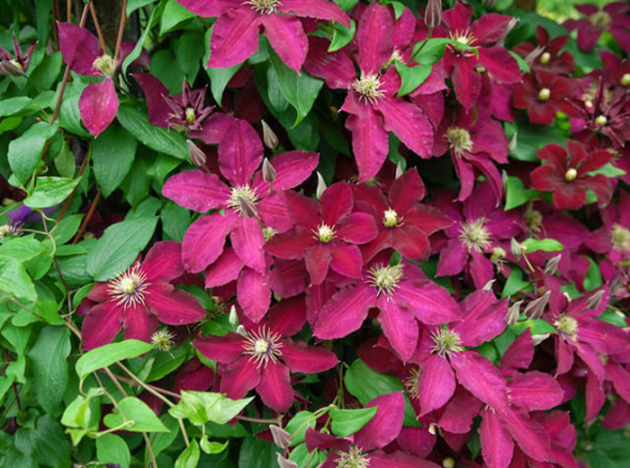

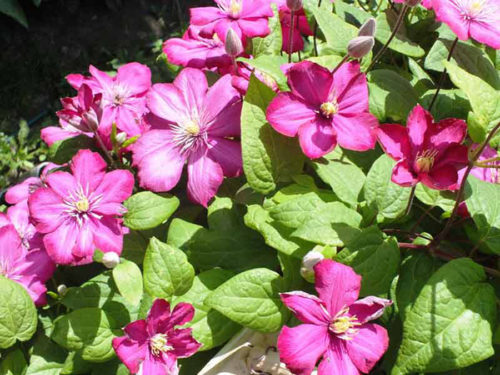
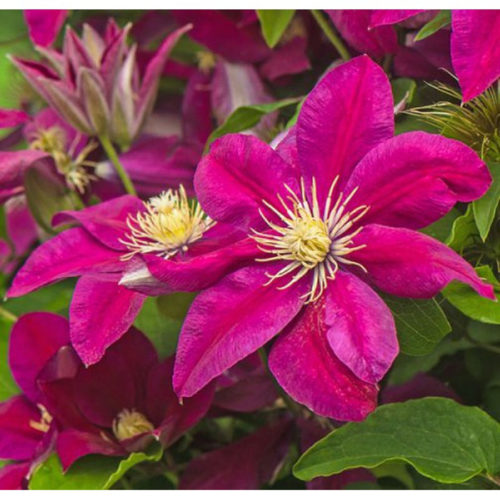
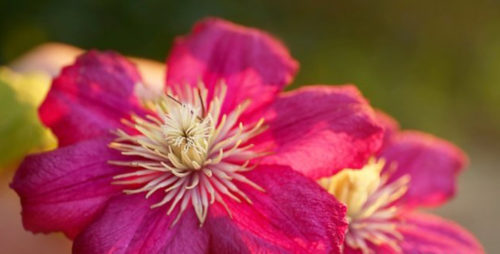
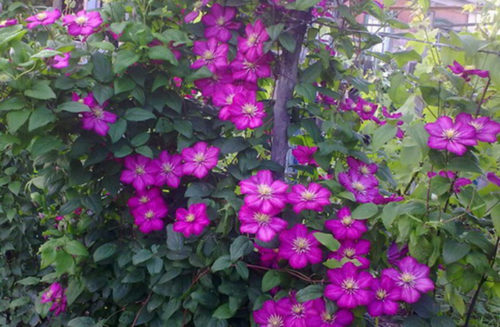

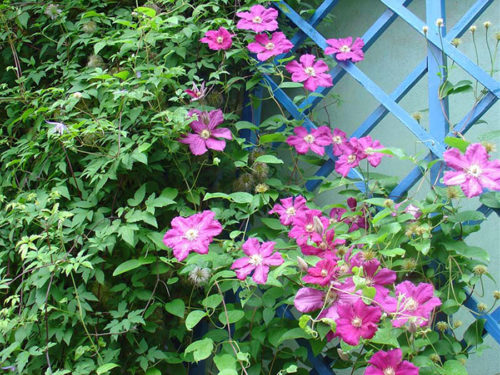


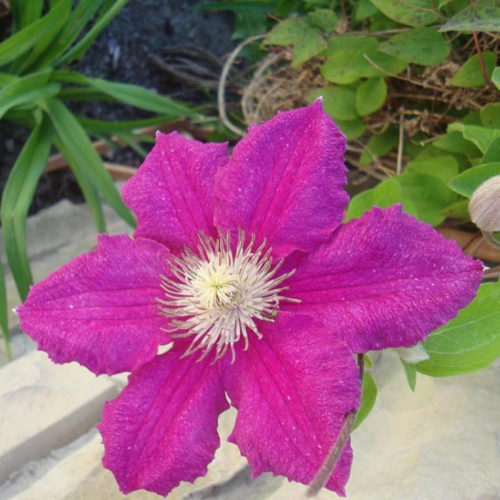
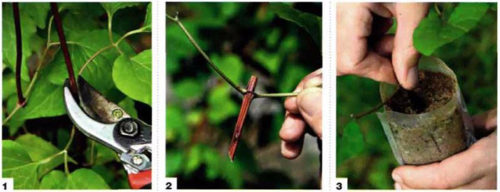
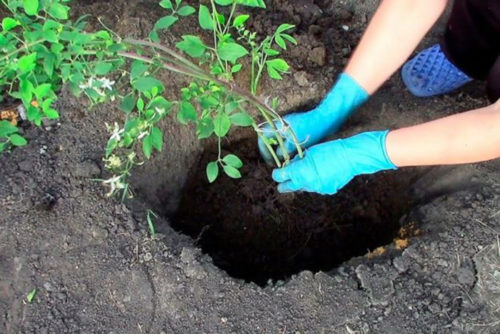

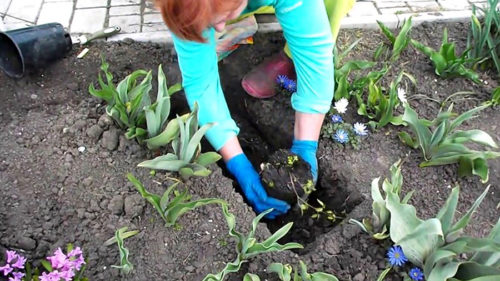
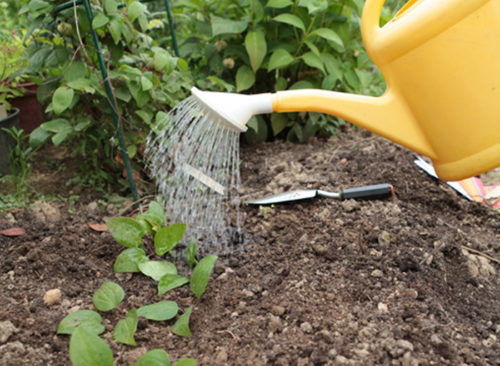












 Start a discussion ...
Start a discussion ...